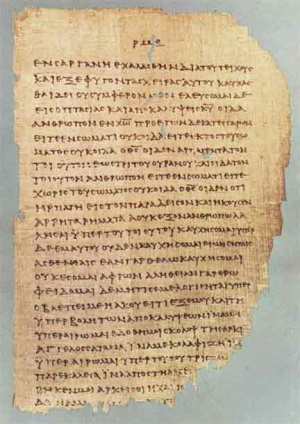Mark

The Gospel According to Mark probably dates from 66–70 AD. Many once held that Mark’s Gospel must have been written no later than the fifties but the common consensus of modern scholars believe it was written around 70 CE. Their reasoning is because it contains detailed information about the First Roman-Jewish and civil wars that took place within the Jerusalem during the Roman's siege from outside.
Some of this is because they do not believe Jesus prophesied a promise that he would return within the lifetimes of his listeners, and failed to do so.
But did he fail to do so?
Their are accounts of Jesus at the fall of Jerusalem.
Mark does not appear first because it was thought to be an epitome or summary of Matthew, but to many others it is likely the earliest written gospel. Whatever the truth is it is not subject to a democratic vote of scholars.
It was probably not written by John Mark the Evangelist, the companion of Peter. It is generally regarded as the work of an unknown author working with various sources that have generally been lost.
It tells us of Jesus' ministry from his baptism by John the Baptist to his death and burial and the discovery of the empty tomb. In it Jesus is a man of action, an exorcist, a healer, and a miracle worker. Jesus keeps his Messianic identity secret, speaking in parables so that even the disciples fail to understand. The gospel in its earliest version end with the discovery of the empty tomb, a promise to meet again in Galilee, and an instruction to spread the good news of the resurrection. There is no genealogy of Jesus or birth narrative, no any post-resurrection appearances. Mark 6:3 is the only place in the New Testament Jesus is referred to as "the son of Mary" and the only gospel where Jesus himself is called a carpenter.
Mark and Luke bear a striking resemblance. Their contents can easily be set side by side in parallel columns.
Mark | Mark 1 | Mark 2 | Mark 3 | Mark 4 | Mark 5 | Mark 6 | Mark 7 | Mark 8 | Mark 9 | Mark 10 | Mark 11 | Mark 12 | Mark 13 | Mark 14 | Mark 15 | Mark 16 |
Bible |
Bible Index |
Bible References |
Biblical bunch |
Sophistry |
Modern Christians |
Whosoever believeth |
Religion |
Bible_terms |
Early non Bible authors
Athenagoras of Athens | Methodius of Olympus | Theophilus or Ignatius of Antioch
Hippolytus of Rome | Justin the Martyr | Jerome | Augustine of Hippo |
Epistle of Mathetes | Gospel of James | The Gospel of Thomas |
Philo Judaeus or Philo of Alexandria and The Allegories of the Sacred Laws
Polybius | Plutarch | Seneca | Tacitus | Suetonius |
Marcus Tullius Cicero | Celsus | Diotrephes |
People in the Bible
Paul the Apostle |
Melchizedek |
Moses |
Cain |
Caesar |
Herod |
Jesus |
John the Baptist |
Matthew |
Mark |
Luke |
John |
Nimrod |
Abraham |
Essenes |
Pharisees |
Sadducees |
Zealots |
Julius Caesar | Augustus Caesar | Tiberius | Nero |
Historical People
Buddha |
Constantine |
Eusebius |
Ambrose |
Augustine of Canterbury |
Lady Godiva |
Vespian |
Diocletian |
Manichaeism |
John Wycliffe |